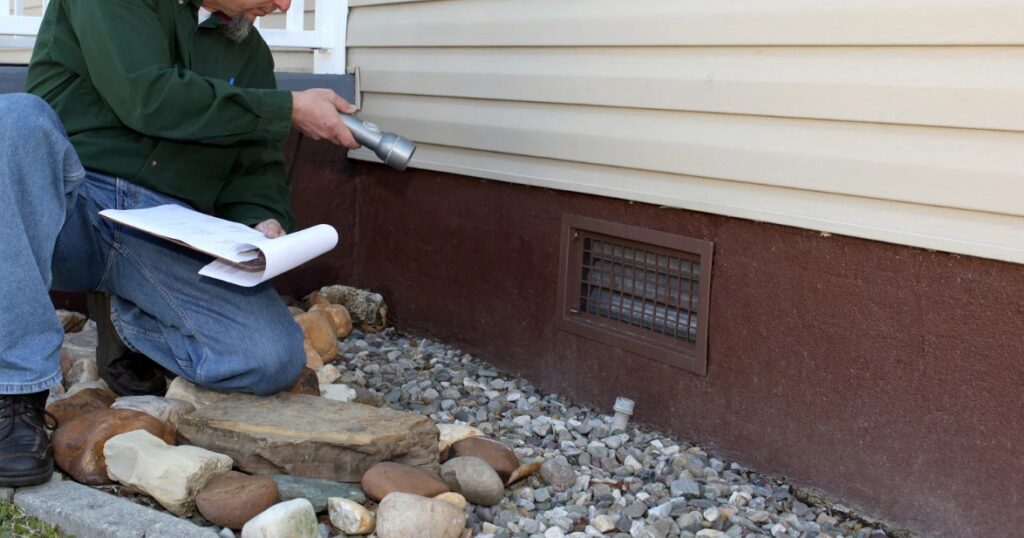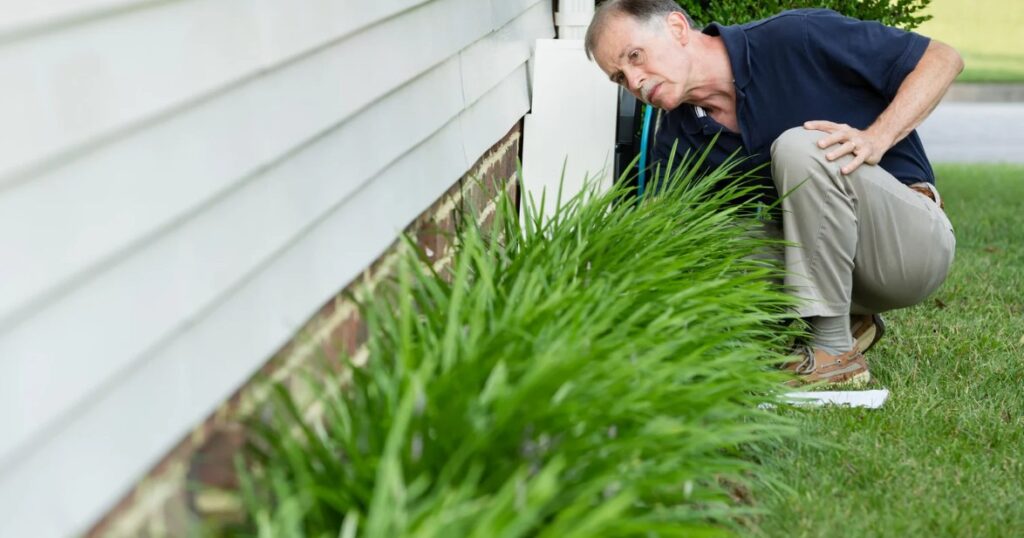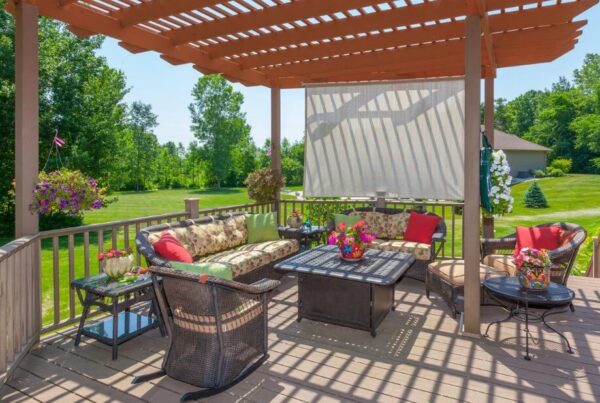Your home’s foundation is arguably the most critical structural component of your property. In Alberta’s challenging climate, with freeze-thaw cycles, clay soils, and extreme temperature variations, foundations face unique stresses that can lead to significant problems over time. Recognizing the early warning signs of foundation issues can save you thousands of dollars in repairs and protect your most valuable investment.
Foundation problems don’t develop overnight, and they rarely resolve themselves. What starts as a minor crack or slight settling can evolve into major structural damage that affects your entire home’s integrity, safety, and value. Understanding what to look for and how foundation issues impact your living space is essential for every Canadian homeowner, particularly those in provinces like Alberta, where soil conditions and weather patterns create additional challenges.
Understanding Foundation Damage in Canadian Homes
Foundation damage in Canada is influenced by several unique factors that homeowners need to understand. The country’s diverse climate zones, from the maritime conditions in the Atlantic provinces to the prairie freeze-thaw cycles in Alberta and Saskatchewan, create distinct challenges for residential foundations.
Alberta’s clay-rich soils are particularly problematic for foundations. These soils expand significantly when wet and contract dramatically during dry periods or freezing temperatures. This constant movement creates hydrostatic pressure against foundation walls, leading to cracks, bowing, and eventual structural failure if left untreated.
The freeze-thaw cycle common across much of Canada is another major contributor to foundation problems. When water enters small cracks in concrete or masonry foundations and then freezes, it expands with tremendous force, widening existing cracks and creating new ones. Over multiple seasons, this process can cause substantial damage to even well-built foundations.
Poor drainage around the home’s perimeter exacerbates these natural challenges. When gutters overflow, downspouts discharge too close to the foundation, or the property’s grading directs water toward the house rather than away from it, the risk of foundation problems increases dramatically.
Visible Signs of Foundation Problems

The most obvious indicators of foundation issues are often visible to the naked eye, though they may start subtly and worsen over time. Recognizing these signs early can prevent minor issues from becoming major structural problems.
Cracks in Foundation Walls
Foundation cracks are among the most common and concerning signs of structural problems. Not all cracks are created equal, however, and understanding the difference between cosmetic and serious structural cracks is crucial for homeowners.
Hairline cracks less than 1/8 inch wide are often considered normal settling cracks, especially in newer homes. These typically appear within the first few years after construction as the home settles into its foundation. However, any crack that continues to grow or allows water penetration requires immediate attention.
Horizontal cracks are particularly concerning as they often indicate significant hydrostatic pressure from surrounding soil. These cracks suggest that the foundation wall is being pushed inward by external forces, which can eventually lead to wall failure if not addressed promptly.
Stair-step cracks in block or brick foundations follow the mortar joints and create a distinctive stepped pattern. These cracks often indicate differential settling, where one part of the foundation is sinking or moving more than another. This type of crack requires professional evaluation to determine the underlying cause and appropriate repair method.
Basement Wall Issues
Basement walls that bow, bulge, or lean inward are clear indicators of foundation problems. These issues typically develop gradually over time as soil pressure increases against the foundation walls. Initially, the inward movement might be barely noticeable, but it can progress to dangerous levels if not addressed.
Water stains, efflorescence (white chalky deposits), or actual water seepage through foundation walls are serious concerns that indicate both immediate water intrusion problems and potential long-term structural issues. These signs suggest that the foundation’s waterproofing system has failed and that hydrostatic pressure may be compromising the wall’s integrity.
Basement floors that crack, sink, or develop uneven areas can indicate foundation settling or soil erosion beneath the concrete slab. While some minor floor cracks are normal, extensive cracking or areas where the floor has noticeably sunk require professional evaluation.
Interior Warning Signs Throughout Your Home
Foundation problems don’t remain confined to the basement or crawl space. As the foundation shifts, settles, or moves, the effects travel throughout the entire structure, creating visible problems on every level of your home.
Doors and Windows That Won’t Function Properly
One of the first signs many homeowners notice is doors and windows that suddenly become difficult to open or close. As the foundation settles unevenly, the house frame shifts slightly, causing door and window openings to become out of square.
Interior doors that swing open or closed on their own, or that require force to latch properly, often indicate that the floor has developed a slope due to foundation movement. This problem typically worsens over time as the foundation continues to settle or shift.
Windows that stick, won’t stay open, or have visible gaps around the frame when closed are experiencing similar stress from foundation movement. In severe cases, you might notice that windows that once provided tight seals now allow air infiltration or even water penetration during storms.
Wall and Ceiling Cracks
Interior wall cracks, particularly those that appear near doors and windows or in corners where walls meet ceilings, can indicate foundation settlement. These cracks often start small but may grow larger over time as the structural movement continues.
Cracks that run diagonally from the corners of doors and windows are particularly telling, as they follow the stress patterns created when a rectangular opening becomes distorted due to foundation movement. These cracks may appear in drywall, plaster, or even painted surfaces and can vary from hairline fractures to significant gaps.
Ceiling cracks, especially those that run parallel to walls or create irregular patterns, can indicate that the entire structure is experiencing stress from foundation problems. While some ceiling cracks result from normal settling or temperature changes, persistent or growing cracks warrant professional evaluation.
Floor Problems Throughout the House
Foundation issues often manifest as floor problems throughout the home. Hardwood floors that develop gaps between boards, especially during seasons when gap formation wouldn’t normally occur, can indicate that the foundation is causing the house frame to shift.
Uneven floors are another common indicator of foundation problems. You might notice that furniture rocks slightly, that rolling objects tend to move toward one area of the room, or that you feel like you’re walking slightly uphill or downhill in certain areas of your home.
Tile floors are particularly sensitive to foundation movement. Cracked tiles, grout lines that have separated, or tiles that have become loose can all indicate that the floor system is moving due to foundation settlement or shifting.
Exterior Signs and Structural Indicators
The exterior of your home often provides the clearest evidence of foundation problems, as this is where the effects of soil movement, water damage, and structural stress are most apparent.
Changes in Your Home’s Exterior Walls
Brick or stone veneer that shows cracks, particularly those that follow mortar joints or create step-like patterns, often indicates foundation movement. These cracks may start small but can grow significantly over time, eventually allowing water infiltration that can cause additional damage.
Gaps between the exterior wall materials and other structural elements, such as where the wall meets the foundation, chimney, or porch, can indicate differential settlement. These gaps may be subtle initially, but can become quite noticeable as foundation problems worsen.
Exterior walls that bow outward or appear to lean can indicate serious structural problems. This type of movement is often most noticeable when viewing the house from the side, where even slight deviations from vertical become apparent.
Foundation Settlement and Sinking
Visible settlement around the foundation perimeter is a clear indicator of problems. You might notice that the foundation wall appears to be sinking into the ground, that there are gaps between the foundation and the soil, or that the foundation appears lower on one side of the house than the other.
Porches, steps, or attached structures that have pulled away from the main house often indicate that different parts of the foundation system are settling at different rates. This differential settlement can create dangerous conditions and should be addressed promptly.
Chimney problems, including leaning, cracks, or separation from the house, often result from foundation issues. Since chimneys are heavy structures with their footings, they may settle differently from the main house foundation, creating stress points and visible damage.
How Foundation Problems Affect Your Daily Life
Foundation issues don’t just threaten your home’s structural integrity; they can significantly impact your daily comfort, safety, and quality of life. Understanding these effects helps homeowners appreciate why prompt foundation repair is so important.
Comfort and Livability Issues
Uneven floors make furniture placement difficult and can cause constant frustration with items that won’t sit level. Bookcases lean, dining tables rock, and even simple tasks like using a rolling desk chair become annoying when floors aren’t level.
Doors that don’t close properly compromise privacy and security. Bedroom doors that won’t stay closed, bathroom doors that swing open, or exterior doors that don’t seal properly all create ongoing inconveniences that affect how you use your home.
Temperature control becomes more difficult when foundation problems create gaps in the building envelope. Drafty conditions mean higher heating and cooling costs, and some rooms may become chronically difficult to keep comfortable.
Safety Concerns
Foundation problems can create genuine safety hazards within your home. Uneven floors increase the risk of trips and falls, particularly for elderly family members or guests who aren’t familiar with your home’s quirks.
Doors that don’t close or latch properly compromise home security and may prevent proper evacuation in emergencies. If foundation movement has affected door frames significantly, you might find that doors can’t be opened at all during an emergency.
Electrical and plumbing systems can be affected by foundation movement, potentially creating hazardous conditions. Electrical outlets that have shifted may have loose connections, and plumbing lines that have been stressed by foundation movement may develop leaks or breaks.
The Progressive Nature of Foundation Damage
One of the most important things homeowners need to understand about foundation problems is that they typically worsen over time. What starts as a minor crack or slight settling can evolve into major structural damage that threatens the entire home’s stability.
How Small Problems Become Big Ones
A small crack in a foundation wall may seem insignificant, but it provides an entry point for water. During Alberta’s freeze-thaw cycles, this water freezes and expands, making the crack larger. Over several seasons, a hairline crack can become a major structural breach.
Similarly, minor settling that initially causes a door to stick slightly can progress to major structural movement that makes the door unusable. As the foundation continues to settle unevenly, the stress on the house frame increases, potentially causing damage to load-bearing walls and support beams.
Water infiltration through small foundation cracks can cause extensive secondary damage. Moisture in the basement or crawl space can lead to mould growth, wood rot, and insect infestations. These problems not only cause additional structural damage but also create health hazards for your family.
Long-term Consequences of Ignoring Foundation Issues
The decision to postpone foundation repairs can have serious long-term consequences that extend far beyond the initial problem. Understanding these potential outcomes helps homeowners make informed decisions about when and how to address foundation issues.
Structural Integrity Concerns
Foundation problems that remain unaddressed can eventually compromise your home’s entire structural system. Load-bearing walls may develop stress cracks, floor joists can become damaged from uneven support, and even roof structures can be affected by ongoing foundation movement.
In extreme cases, unrepaired foundation problems can make a home unsafe to occupy. While this level of damage typically develops over many years, the progression can accelerate if environmental conditions worsen or if multiple foundation problems combine to create compounding stress on the structure.
The interconnected nature of residential construction means that foundation problems can cause damage throughout the house. Plumbing lines may break due to shifting, electrical systems can be compromised, and HVAC ductwork may become disconnected or damaged.
Prevention and Early Intervention Strategies

While some foundation problems are inevitable due to natural soil conditions and climate factors, many can be prevented or minimized through proper maintenance and early intervention strategies.
Proper Drainage and Water Management
Maintaining proper drainage around your home’s perimeter is one of the most effective ways to prevent foundation problems. This includes:
- Ensuring gutters and downspouts direct water at least six feet away from the foundation
- Maintaining proper grading so that surface water flows away from the house
- Installing and maintaining window well covers and drains
- Addressing any low spots in the yard where water tends to collect near the foundation
Regular maintenance of these systems is crucial, particularly during Alberta’s spring snowmelt period when large volumes of water can quickly accumulate around foundations.
Soil and Landscaping Considerations
The type and placement of landscaping around your home can significantly impact foundation stability. Large trees planted too close to the house can cause problems both through root growth that disturbs foundation footings and through soil moisture changes as roots absorb water.
Maintaining consistent soil moisture levels around the foundation helps prevent the dramatic expansion and contraction cycles that damage foundations. This might involve watering during dry periods or improving drainage during wet seasons.
Understanding your property’s soil conditions helps you make informed decisions about landscaping and drainage. Clay soils require different management strategies than sandy or rocky soils, and professional soil evaluation can provide valuable guidance for foundation protection.
Regular Inspection and Monitoring
Homeowners should conduct regular visual inspections of their foundations, looking for new cracks, signs of water infiltration, or changes in existing conditions. These inspections should occur at least twice yearly, ideally in spring and fall when seasonal soil changes are most pronounced.
Documenting the condition of your foundation with photographs can help you track changes over time and provide valuable information to professionals if repairs become necessary. This documentation can also be useful for insurance purposes if foundation problems lead to secondary damage.
Professional foundation inspections every few years can identify potential problems before they become serious. These inspections are particularly valuable for older homes or properties in areas with challenging soil conditions.
Conclusion
Foundation problems are serious issues that require prompt professional attention. If you’ve noticed any of the warning signs discussed in this article, don’t wait for the problems to worsen. Early intervention can save thousands of dollars in repair costs and protect your family’s safety and comfort.
For expert foundation repair services in Edmonton and the surrounding area, contact GPS Alberta today. Our experienced team provides comprehensive foundation evaluation and repair services, helping homeowners protect their most valuable investment with quality workmanship and reliable solutions.



